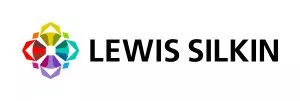- within Real Estate and Construction topic(s)
- with Senior Company Executives and HR
- in United States
- with readers working within the Property and Law Firm industries
In today's commercial real estate market, the lease sets the legal baseline — but the quality of the landlord–tenant relationship determines day-to-day performance and long-term value. As expectations around ESG, wellbeing, digital enablement, and operational excellence continue to rise, moving from a transactional footing to a genuine operating partnership can improve building performance, reduce risk and friction, enhance occupier experience, and protect asset value.
The core benefits of collaboration, and practical steps landlords and tenants can take to embed partnership into leases, operations, and culture enable aligned incentives, faster decision-making, and more resilient outcomes through market cycles.
Relationships matter
A commercial lease defines rights and obligations; the relationship determines how effectively those rights are exercised and how issues are resolved. Professional standards, such as the RICS Code for Leasing Business Premises and the RICS Professional Statement on Service Charges, emphasise transparency, engagement, and fair dealing — all of which are relationship attributes. In practice, reducing friction in routine matters like service charges, repairs, alterations, and building access, helps provide a stable platform for resolving key events such as rent reviews, lease renewals, fit-outs, and lifecycle upgrades.
Meeting energy and sustainability requirements requires landlord–tenant coordination, not unilateral action. Occupiers expect buildings that support health, inclusivity, and hybrid working; owners are competing with amenity-rich, high-performing assets. Where relationships are strong, parties can jointly plan and deliver improvements, align capital expenditure with occupier needs and regulatory timelines, and avoid stranded-asset risk. Tenants benefit from predictable costs, clearer standards, and faster resolution of operational issues that directly affect productivity and staff wellbeing.
Key benefits of a strong landlord–tenant partnership
A collaborative approach has measurable advantages for both landlords and tenants across environmental, social, governance, operational, and financial matters.
- Environmental performance improves when both sides share data, agree targets, and coordinate operations. Energy, water, and waste metrics can be used to benchmark performance and target interventions in lighting, HVAC scheduling, submetering, and demand management. This enables credible progress against reporting regimes and supports green lease provisions, ratings and certifications. Better performance typically correlates with lower operating costs, reduced service charge volatility, and resilience to tighter regulation.
- Social value is amplified through joint initiatives that enhance wellbeing and community outcomes. Programmes addressing indoor air quality, thermal comfort, active travel, healthy food options, accessibility, inclusive design, and supplier persity in service contracts strengthen occupier satisfaction and build corporate reputation. Collaboration brings scale, consistency, and improved reporting compared to isolated efforts.
- Governance strengthens with predictable processes and transparent decisions. Clear service charge methodologies, agreed annual plans, and performance goals reduce disputes and management time. Regular reviews, fair dispute resolution mechanisms, and data-led reporting make the building's operating model more investable and less exposed to market shocks.
- Asset value is enhanced when ESG performance and occupier experience are visibly integrated. Buildings with credible pathways to net zero, strong indoor environmental quality, and robust ratings are more attractive to institutional tenants and investors. Collaboration accelerates certifications and improves lettability, while reducing re-letting periods, incentives at lease events, and the risk of stranded assets.
- Wellbeing outcomes are stronger when both sides curate the user experience. Air quality monitoring, daylighting strategies, acoustic management, natural elements, and inclusive amenities support health, satisfaction, and productivity. Coordinated policies for active travel, and healthy food amplify engagement and help tenants attract and retain talent.
How to build a better relationship: practical steps
Successful partnerships don't happen by accident. They are designed into the lease, embedded in building operations, and sustained through a culture of transparent engagement and continuous improvement. The following practices help create the conditions for trust and performance.
- Transparency: Use clear, fair service charge provisions aligned with recognised standards. Where suitable, incorporate balanced "green lease" clauses to enable data sharing, metering access, collaboration on performance targets, and cost-sharing mechanisms for efficiency improvements. Keep drafting practical and proportionate, enabling cooperation rather than rigid obligations.
- Embed ESG and data in day-to-day operations: Agree what operational data is collected, how it's measured, and how it's shared and protected. Prioritise energy, water, waste, indoor air quality, thermal comfort, and space utilisation. Implement submetering and smart systems where feasible. Use a shared dashboard to track performance, spot anomalies, and co-own improvement plans. Align building-level metrics with each party's corporate reporting needs.
- Establish shared purpose and effective communication channels: Create a building charter covering service quality, sustainability, health and safety, wellbeing, and community impact. Form an occupier forum or steering group with regular meetings to review performance, service charge forecasts, ESG targets, works programming, and feedback. Document roles, decision pathways, and escalation routes to resolve issues quickly without damaging the relationship.
- Plan for lifecycle and compliance early: Align planned preventative maintenance, refurbishment cycles, and capital works with occupier operations and regulatory milestones. Collaboration is essential for upgrades crossing demise boundaries — façade improvements, plant replacement, or smart building infrastructure. Early engagement reduces downtime, minimises disputes about reinstatement or dilapidations, and may unlock grants or incentives where available.
- Embed wellbeing in design and operations: Agree a baseline for indoor environmental quality and operational practices to support occupant health. Coordinate HVAC settings, fresh air rates, filtration, cleaning protocols, and maintenance schedules. Where appropriate, adopt recognised wellbeing frameworks to guide continuous improvement. Support active travel with secure cycle storage, showers, drying rooms, and ensure accessibility and inclusivity are reflected in policies and fit-outs.
- Manage the user experience: Provide a clear building user guide explaining systems, amenities, hours of operation, and sustainability initiatives. Run engagement activities such as energy awareness campaigns, waste reduction pilots, and health events. Ensure facilities teams are trained to respond consistently and proactively to occupier feedback.
- Invest in capability and culture: Equip property and facilities teams to interpret performance data, implement ESG initiatives, and manage stakeholder relationships. On the occupier side, designate building champions to coordinate estates, procurement, health and safety, and HR.
- Communicate with purpose and predictability: Provide regular updates on planned works, ESG progress, user feedback, and security changes. Maintain two-way communication: landlords gain insight into evolving occupancy patterns; tenants understand operational constraints and trade-offs. Clear communication during fit-outs, access requests, and alterations reduces delays and friction.
- Measure, report and take action: Set annual targets for building performance, occupier satisfaction, and community impact. Report outcomes to the forum and agree corrective actions.
Bringing it all together
A collaborative landlord–tenant relationship is an operating advantage in a market where liquidity and valuation increasingly reflect operational quality. By shifting from a transactional stance to a strategic partnership — anchored in transparency, shared data, coordinated planning, and a focus on ESG and wellbeing — both sides unlock immediate value and futureproof their interests in a building.
Practical takeaways
- Start with clarity: Review service charge provisions and management practices against recognised standards. Where appropriate, introduce green lease clauses that support data sharing and joint performance targets.
- Share data to save costs: Establish a shared dashboard for energy, water, waste, and indoor air quality. Use it to target and validate quick wins, then reinvest savings into longer-term improvements.
- Formalise engagement: Set up a quarterly occupier forum with a standing agenda, clear decision rights, and agreed escalation routes.
- Align lifecycle plans: Map capital programmes to occupier needs and regulatory milestones to minimise downtime and avoid late-stage surprises.
- Make wellbeing a baseline: Agree indoor environmental quality standards and align HVAC, filtration, cleaning, and amenity provision to support health and productivity.
- Always keep improving: Set targets, report regularly, and make improvements.
In an environment shaped by evolving regulation, investor scrutiny, and rising occupier expectations, the relationship between a landlord and a tenant becomes part of the asset's intrinsic value. Treating landlords and tenants as partners in the building's success is not just good practice — it is a commercial necessity.
The content of this article is intended to provide a general guide to the subject matter. Specialist advice should be sought about your specific circumstances.


